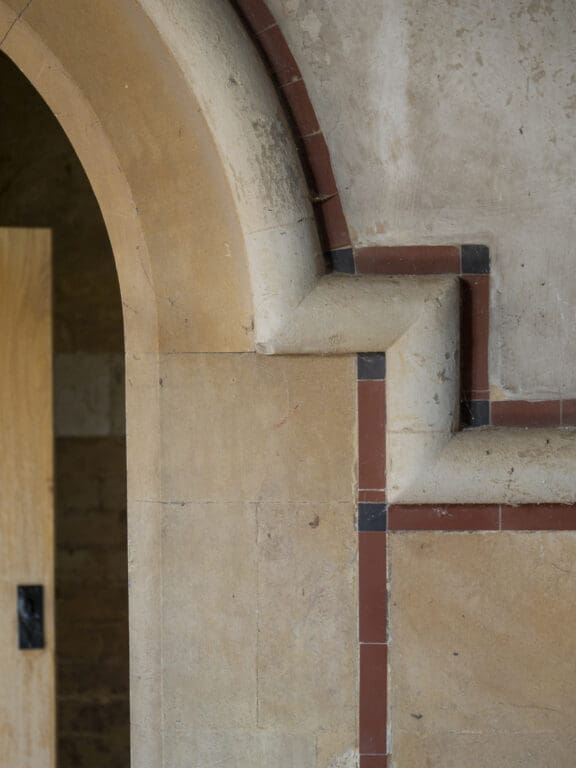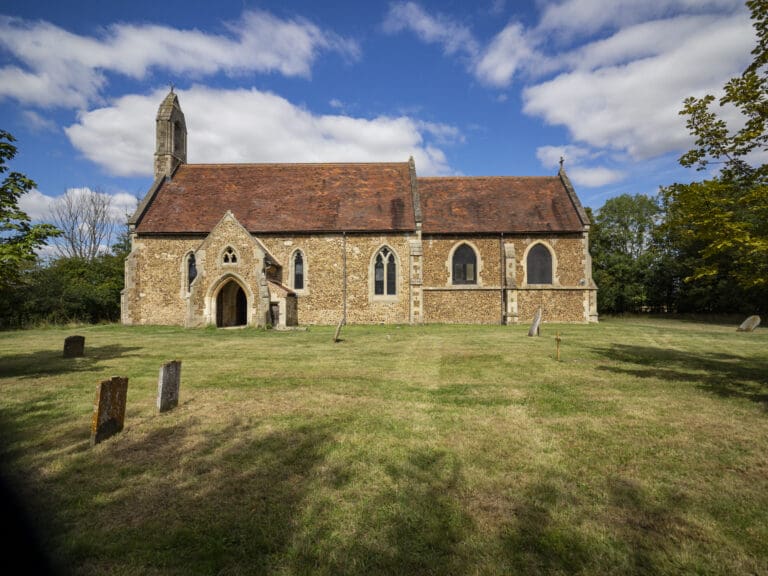
Open daily
OS grid reference
TL285505
what3words
safe.tallest.bucklingThe churchyard is still owned by the parish. It is open for burials, and has been designated a Local Nature Reserve and a County Wildlife Site.
The church was extended and elaborated in the 1300s. It was restored in the 1870s by renowned Victorian architect, William Butterfield before being abandoned in 1961. For over forty years, it languished, was swallowed up by vegetation, and seemed like it would soon be lost forever…
St Denis’s is a Grade II* listed church. The earliest fabric dates to 1217, but much of the surviving medieval elements are from the 14th century. In 1661, Sir George Downing bought East Hatley from the Castells. A large, finely carved cartouche dated 1673 over the main entrance is the only trace of Downing at the church. This is because in 1874, architect William Butterfield was commissioned to restore the church. A lot of what you see to date comes from Butterfield’s restoration, showing his High Victorian fondness for polychromatic stone and brickwork.
Gradually, the church fell into disrepair and, as the cost of repairs couldn’t be met, St Denis’s was abandoned in 1961. Worshippers decamped to a small, heated pre-fab church, which was partially furnished with fittings from the old church. St Denis’s retains its 19th-century font, and ghosts of the pulpit and reredos.
South Cambridgeshire District Council took the church into ownership in 1985. By this point, the building had been stripped – even the floor-boards had gone! The Council preserved the site as a nature reserve and it is currently home to cave spiders, bats and great crested newts.
In 2005-06, £130,000 worth of vital repairs were undertaken. This work, funded by South Cambridgeshire District Council, English Heritage and Hatley Parish Council, left the church wind and watertight, but not safe to use on a regular basis.
In late 2016, the church was transferred into our ownership. The transfer came with a £60,000 grant from the Council to fund work to restore the building to usable condition. This covered half of the costs to restore the glazing in the nave and re-instate floorboards, so it was possible to walk through the building. In 2020 and 2022 we received a grant from the Culture Recovery Fund which enabled us to stabilise the paint scheme and tiles in the chancel, reinstate the north and south windows and restore plaster to the nave. We were delighted that St Denis’s was awarded Best Conservation, Alteration, or Extension of an Existing Building (under £2m construction costs) in the 2023 Greater Cambridge Design and Construction Awards! St Denis’s is now open daily, thanks in no small part to the support of heroic local volunteers.




Please use these links if you would like to know more about the church and the surrounding area
Become a Friend
Receive our printed magazine — exclusive to members — and help us rescue more closed, historically important churches.